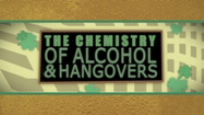FOR IMMEDIATE RELEASE | March 16, 2010
The chemistry of alcohol and hangovers: A new ACS video
WASHINGTON, March 16, 2010 — Anyone who needs a reason not to overindulge on St. Patrick’s Day –– or on any other day of the year –– can view a new American Chemical Society (ACS) video on alcohol’s effects on the body.
The Chemistry of Alcohol and Hangovers illustrates in brilliant high-definition detail the unpleasant after-effects that excessive drinking can have on the body. The video, released today, showcases a lecture on the topic by Diane Bunce, Ph.D., professor of chemistry at the Catholic University of America (CUA). A recipient of the ACS Helen Free Award for Public Outreach and associate, Bunce is editor for Chemical Education research for ACS’ Journal of Chemical Education.
Media Contact:
Michael Bernstein
m_bernstein@acs.org
202-872-6042
Michael Woods
m_woods@acs.org
202-872-6293
The video, available today, March 16, beginning at 6 p.m. ET, was produced by the ACS Office of Public Affairs and illustrates the chemistry behind these and other side effects of hangovers:
- Headaches, caused by low blood sugar and allergic reactions to certain ingredients in liquor.
- Nausea and upset stomach, resulting from alcohol’s irritant effect, which stimulates the secretion of acid in the stomach.
- Thirst, the result of alcohol’s dehydrating effects on the body.
- Blood sugar levels, which increase for about an hour, and then drop to low levels that contribute to hangover symptoms.
Bunce delivered the lecture as part of a chemistry course for nonscience majors course at CUA. “The students include majors in politics, education, English, history, philosophy, and other fields,” Bunce noted. “It’s an excellent group to educate about the chemistry behind real-world issues.”
###


